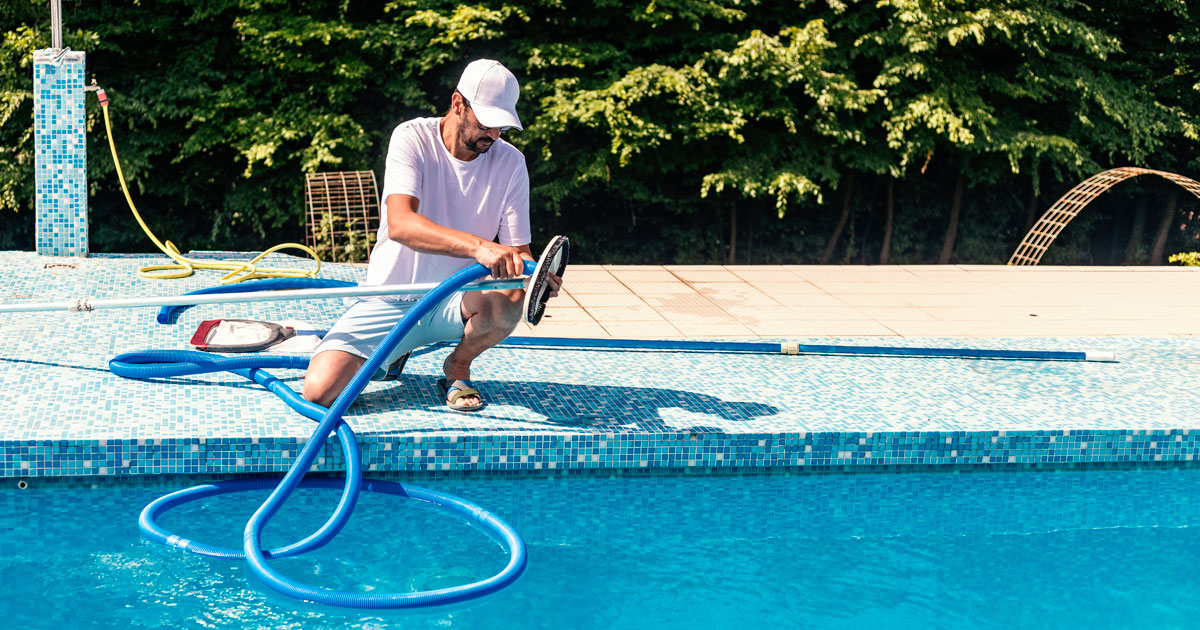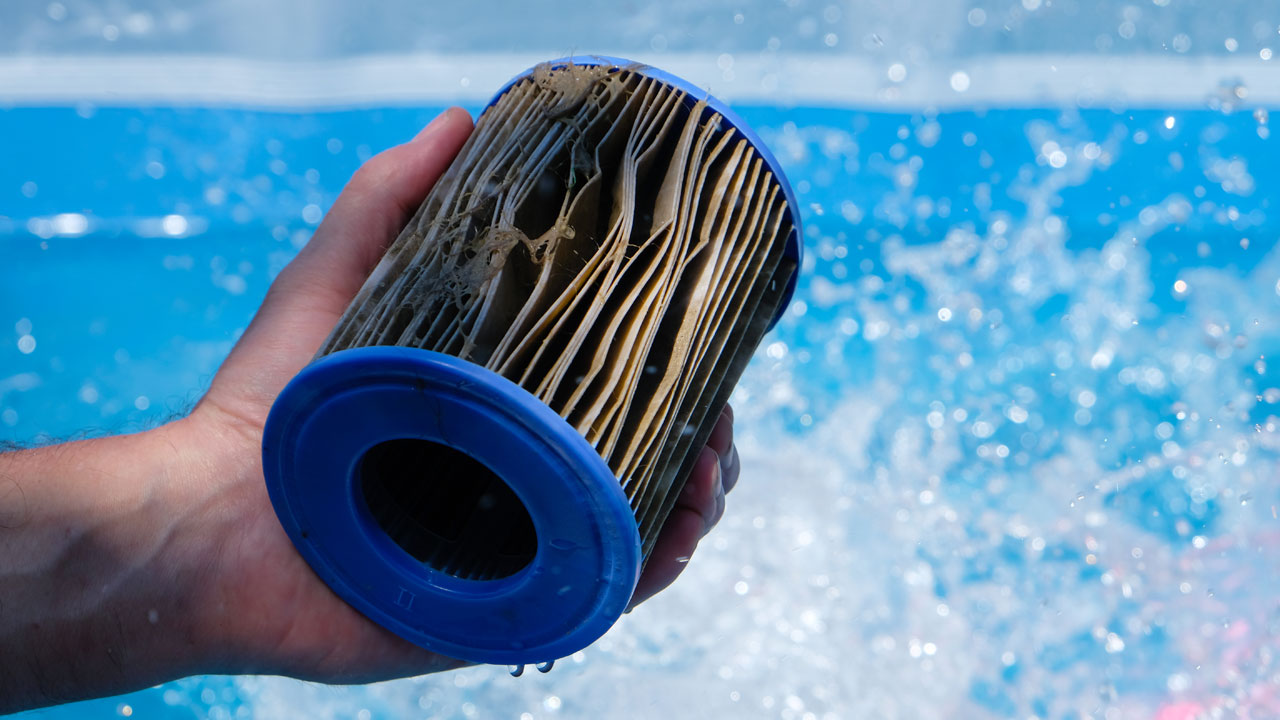How Long Do Pool Filter Cartridges Last? Guide to Replacing vs. Cleaning
 Andrew
November 26, 2025
#cartridgefilter
#filtercleaning
#filterreplacement
#poolfilter
#spafilter
Andrew
November 26, 2025
#cartridgefilter
#filtercleaning
#filterreplacement
#poolfilter
#spafilter

- Help you understand the real factors that determine pool filter cartridge lifespan beyond manufacturer timelines
- Show you effective cleaning techniques and when they're worth the effort versus replacing
- Give you five clear signs that indicate it's time to stop cleaning and buy new cartridges
Manufacturers vary on the stated lifespan of pool filter cartridges, but 1–3 years is common. Any "standard" swimming pool filter cartridge replacement recommendation assumes average residential pool use, but your actual conditions for answering how do I know if my pool cartridge is bad may vary significantly. Several key factors determine how long your pool and spa filter cartridges will effectively clean your water.
Usage Intensity Makes the Biggest Difference
A seasonal pool used by a family of four for three summer months will see dramatically different wear than a year-round heated pool with frequent entertaining. Heavy use introduces more oils, lotions, and organic matter that clog filter pleats faster. Similarly, pools with hot tub or spa attachments typically require more frequent cartridge attention due to higher operating temperatures and concentrated chemical levels.
Environmental Factors You Can't Control
When considering how often to replace a pool filter cartridge, your location plays a crucial role in filter longevity. Pools surrounded by trees face constant leaf debris and organic matter. Desert environments contribute fine dust and sand particles. Areas with hard water deposit minerals that gradually reduce filtration efficiency. Wind patterns, nearby construction, and even seasonal pollen can accelerate cartridge degradation.
Realistic Timeline Expectations
Rather than fixed dates, focus on performance indicators. Well-maintained seasonal pools may stretch cartridge life beyond two years, while heavily used year-round installations might need replacement every 8–12 months. The key is establishing a baseline for your specific situation through observation and maintenance records.
Most pool owners can extend cartridge life with proper rotation and cleaning, but knowing when to stop cleaning and start replacing saves both time and money.
Many pool owners don't realize that regular cleaning can extend cartridge life, while others waste time trying to revive cartridges that should be replaced. Understanding the difference is crucial for both water quality and your budget.
Effective Cleaning Techniques and Products
Start with a simple rinse between deep cleanings. Use a garden hose with a spray nozzle to wash debris from pleats, working from top to bottom. For deeper cleaning every 4–6 weeks, rotate cartridges so you always have a clean set while others soak.
For spa and hot tub filters specifically, rinsing frequency should increase to every two weeks rather than monthly. The combination of high water temperatures, concentrated sanitizer levels, and body oils from lotions and sunscreen create a perfect storm for rapid filter clogging. This biweekly rinse removes surface buildup before it becomes embedded in the pleats, helping spa filters maintain efficiency between deep cleanings.
Commercial filter cleaners using trisodium phosphate (TSP) or some dishwasher detergents work well for removing oils and organic buildup. A typical solution is one cup of TSP or detergent with five gallons of water in a bucket for a three-hour soak. If stains are persistent, an overnight soak method might help. For mineral deposits common in hard water areas, a white vinegar soak (50/50 vinegar and water) for a few hours can help dissolve calcium and scale. If tackling both, always use TSP first, then an acid like white vinegar muriatic acid for scale. Always thoroughly rinse filters before reinstallation to prevent foaming.
Lastly, it is important to follow any specific manufacturer guidelines indicated on the packaging. For example, some filter media (the material used in the pleated part of the cartridge) may not withstand heavy chemical cleaning (or multiple rounds of it), but such filters may still benefit from periodic low-pressure rinses, such as from a garden hose. When rinsing, be cautious with pressure washers to prevent damaging the filter media and be aware that spraying off and cleaning a pool or spa filter does not guarantee it will filter at the same efficiency as a new filter.
Troubleshooting: 5 Signs It's Time to Replace
- Persistent high pressure readings that don't drop after thorough cleaning signal permanently clogged pleats
- Reduced water flow from return jets despite clean cartridges points to compromised filtration media
- Visible damage to filter including torn pleats, cracked end caps, or collapsed filter bands
- Stubborn discoloration that resists overnight cleaning: brown, gray, or green staining indicates absorbed oils and minerals
- Shortened intervals between cleaning times suggest the filter can no longer hold adequate debris

Making Smart Economic Decisions
Ultimately, it's useful to consider your time investment versus replacement cost. If you're cleaning cartridges monthly instead of seasonally, replacement may become more economical. It'll certainly save you time. Factor in water and chemical costs too. Poor filtration requires additional sanitizers and clarifiers that quickly offset cartridge savings.
Establish a rotation system with multiple sets of cartridges. This approach extends overall life by allowing thorough cleaning and complete drying between uses, while ensuring your pool never operates with compromised filtration.
The bottom line: monitor performance rather than calendar dates. A well-maintained cartridge that maintains proper flow and pressure can serve effectively well beyond manufacturer timelines, while heavily stressed filters may need replacement within months of installation.




